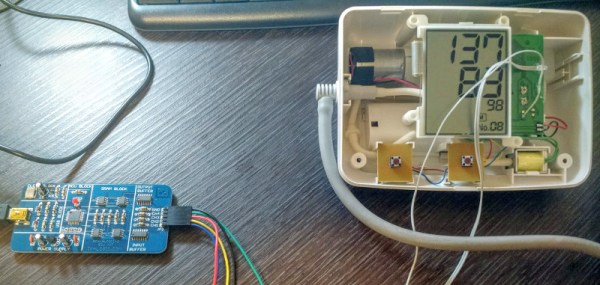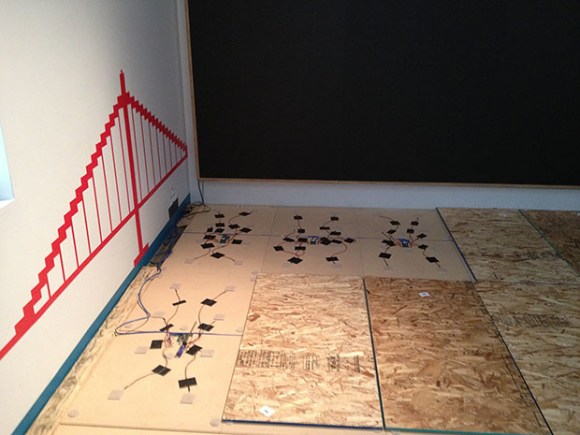[Eduardo] contacted us about his success at connecting a blood pressure monitor to the web. He pulled this off by locating the chip responsible for storing the blood pressure data after being measured. It was a simple I2C EEPROM from which he dumped the data a sniffed communications with a 4 bit logic analyzer. [Eduardo] published all of his findings on that communication scheme so check out his post for more on that. The gist of it is that he implemented his reverse engineered protocol using an ESP8266, the ubiquitous cheap WiFi board that has become a go-to for web-connected anything like power monitors and underpowered but awesome server farms. Check out the Hackaday Dictionary entry for more on this board.
[Eduardo] is not the first on the scene with such a device, you can see a Withings device and a blipcare device available on Amazon. What this hack from [Eduardo] does provide is evidence of a much cheaper route for connecting vital medical data from a geographically distant, and perhaps technophobic family member. Lets take a walk down hypothetical lane, shall we? Uncle Bob in Albuquerque who doesn’t have any local family might be a good candidate for such a hacked device, everyone knows it’s like pulling teeth to get elderly family members to report some health information to loved ones… but with [Eduardo’s] hack it’s simple. Embed the hardware (assuming you know the login creds ahead of time) into a new BPM, send it to him as a gift, and Bob’s your uncle.
We haven’t seen too many blood pressure monitor hacks, but one entry from the Hackaday Prize dubbed “the pain machine” included monitoring the user’s blood pressure. We also covered an interesting hack on monitoring your heart rate with a piezo element.
A quick demo of [Edward’s] cuff is found below.
Continue reading “Push Blood Pressure Data To The Cloud Via ESP8266”















